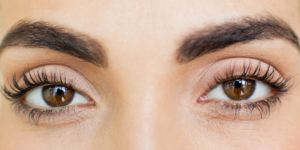
When it comes to bronchial asthma, preventive measures should be implemented; you should also be aware of the causes and triggers of the condition. A long-term respiratory system inflammation is known as bronchial asthma. The patient experiences breathing difficulties during asthma attacks, which are a common side effect of this illness. Seizures can occasionally be so severe that a fatal consequence is possible, however this is extremely uncommon. The disease frequently manifests its early symptoms as early as childhood (up to 11 years old). But bronchial asthma can strike at any age, and it can vary in severity and frequency of exacerbation episodes. Wheezing, shortness of breath, coughing, mild dyspnea, and tightness in the chest are the most typical symptoms.
Factors that Triggers Asthma
Everyone knows that it is better and easier to prevent the progression of the disease than to deal with its consequences, so timely prevention of bronchial asthma is extremely important. Bronchial asthma triggers due to the hypersensitivity of the body in response to allergens. Both external and internal factors may arise in their role. One of the possible internal causes is a hereditary character, so doctors recommend the prevention of bronchial asthma.
The most common external factors are frequent infectious susceptibility of the respiratory system and the negative effects of allergens. Bronchial asthma can be provoked by:
Drugs (primarily non-steroidal anti-inflammatory drugs and acetylsalicylic acid);
Frequent stressful situations;
Allergens (food, mushroom spores, animal hair, ticks, dust, pollen from plants);
Irritating environmental factors (cigarette smoke, exhaust fumes, perfume, sprays);
Penetration of bacteria and viruses into the body (flu, bronchitis, sinusitis, colds);
Prevention of asthma attacks
The primary and secondary prevention of Bronchial Asthma is:
The primary prevention of asthma is aimed at preventing the outbreak. The secondary prophylaxis involves a set of measures designed to prevent acute attacks of suffocation. The primary prevention of bronchial asthma must be performed to patients, who are in the high-risk category of getting sick (primarily children).
Primary prevention of bronchial asthma includes the following measures:
Performing a set of exercises for physical recovery and strengthening immunity;
The moderate use of aerosol products in the home;
Correct behaviour of pregnant women for the good health of their unborn baby:
Rational nutrition with minimal consumption of products with histamine-laboratory and allergenic activity, exclusion of harmful pr Smoking cessation, prevention of acute respiratory viral infections and other diseases, the use of drugs strictly as prescribed by the attending physician, and subsequently breastfeeding;
Refusal of active and passive smoking;
Frequent walks in the fresh air;
Living in an environment with favourable environmental conditions;
Minimal contact with chemicals in the household.
Secondary prevention of asthma attacks is based on:
Elimination of chronic sinusitis, infectious lesions of the respiratory system and other pathologies;
Avoid contact with allergens;
Often performing wet cleaning of the place of residence;
Regular dusting of all rooms and drying of bed linen, pillows and blankets in frost or heat in the fresh air;
Exclusion of objects prone to dust accumulation (carpets, old furniture, rugs, soft toys);
Exclusion of interaction with pets or houseplants if they provoke attacks of suffocation;
Refusal to breed domestic fish, for which dry food often provokes allergic reactions;
Removal of fungus or mould at home, as well as excessive moisture;
Prevent Asthma with Medication
Asthmatics utilize inhalers, which are first-aid medications that assist halt bronchial asthma attacks before they worsen. Other medications can be taken to assist lessen the incidence of exacerbations during the intervals between seizures. There are two major groups of inhalers used to treat asthma:
Bronchodilators: reduce bronchial spasms and enlarge vessel lumen. These medications are used when the disease is acutely attacking.
When taken in moderation, anti-inflammatory medications help reduce swelling and inflammation in the airways, which can stop an attack from starting or lessen its frequency and severity.
It’s crucial to consider an inhaler’s makeup before selecting one because it includes a
an ingredient used to treat asthma. There are various kinds of inhalers, and each has unique qualities:
Powder metered-dose inhalers: Simple to use, they enable you to rapidly administer the recommended dosage of medication to the inflammatory region.
Spacers: They give an inhaler-attachable plastic chamber. Such a device works on the basis that the patient only gets the required dosage of medication when inhaling.
Metered liquid apparatus: these facilitate the drug’s passage to the respiratory tract during an attack. Since an asthmatic may always have it in their pocket and use it to virtually immediately relieve symptoms during an asthma attack, asthma aerosols are thought to be the most convenient. However, for
They should not be given to youngsters younger than four.
Nebulizer: With this gadget, you can spray two doses of medication at once. The medication can reach even the furthest reaches of the lungs because to this device’s ability to spray it in tiny fractions. You can use both preventative and attack-stopping meds with a nebulizer. All drugs must be purchased in nebulas or a solution without silt or tiny particles when utilizing a nebulizer. Children can use the nebulizer at home with great success.




